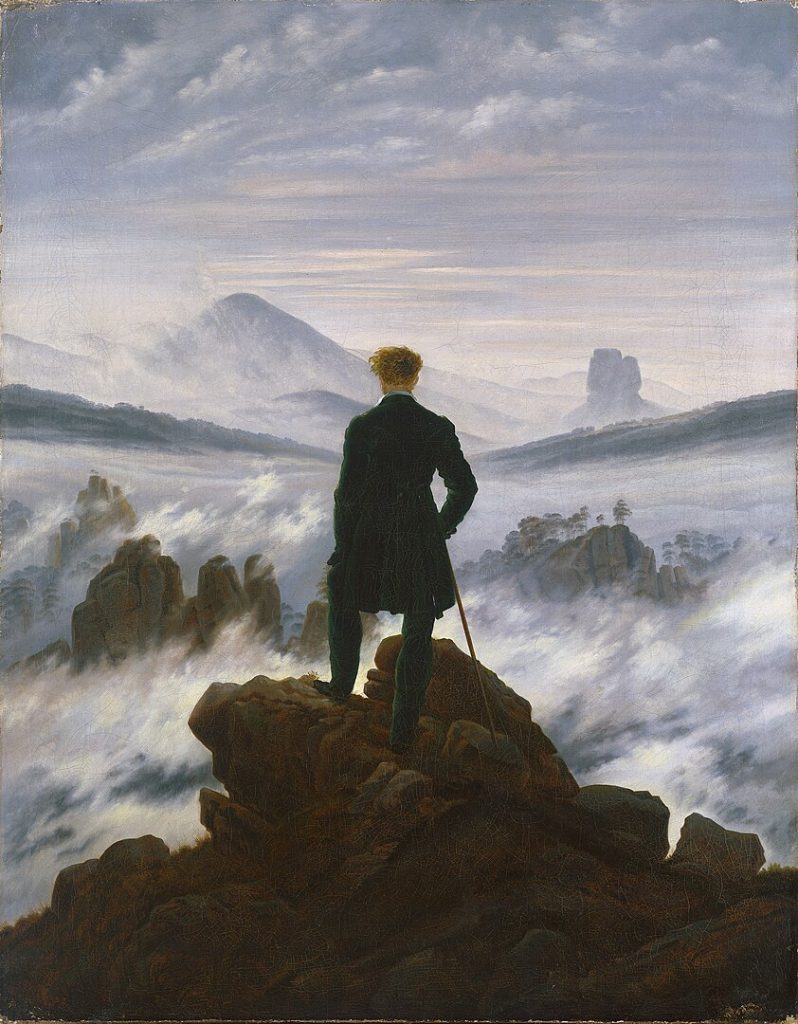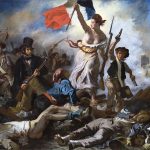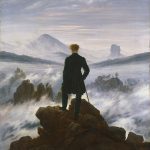
In the tapestry of educational history, Romanticism weaves a vibrant thread, transforming the academic landscape with its ethos of emotion, nature, and individualism. This cultural and intellectual movement, which thrived during the late 18th and early 19th centuries, not only revolutionized art and literature but also deeply permeated the realm of academia, giving birth to what we now recognize as Academic Romanticism. The principles of Romanticism, with their emphasis on the personal experience of learning, the beauty of the natural world, and the liberation of the individual from rigid educational structures, found fertile ground in the minds of educators and scholars. This article delves into how these Romantic ideals reshaped educational philosophies, methodologies, and the very essence of what it means to learn, highlighting the profound and lasting influence of Romanticism on the academic world.
The seeds of Romanticism were sown in the fertile minds of philosophers and poets who envisioned education as more than just the transmission of knowledge. Instead, they saw it as a holistic journey of personal and intellectual development. This perspective was revolutionary in a period dominated by the Enlightenment’s focus on reason and science. By delving into the historical context and key figures, we can better understand how Romanticism altered the academic landscape, challenging conventional norms and fostering a new era of learning.
Understanding Romanticism’s influence is not just an academic exercise but a journey through time that connects us with the past’s intellectual fervor. It’s about recognizing how the past shapes the present, and how ideas once considered revolutionary now underpin many of our modern educational practices. This introduction sets the stage for a detailed examination of Romanticism’s roots, its impact across various academic disciplines, and the pivotal figures who championed its ideals.
As we embark on this exploration, we’ll discover that Romanticism in academia was not just about adopting new teaching methods but about redefining what education could and should be. It was a call to educators to nurture the whole person, not just the mind, and to integrate the beauty of the natural world and the depth of human emotion into the learning process.
The Roots of Romanticism in Education
The genesis of Romanticism in education can be traced back to Jean-Jacques Rousseau, whose work “Emile” argued for an educational system that cultivated natural human instincts over societal norms. Rousseau posited that education should follow the child’s interests, fostering a love for learning through interaction with nature rather than through rote memorization. His ideas were a direct critique of the Enlightenment’s mechanistic view of education, advocating for an organic, intuitive approach to learning.
Following Rousseau, Johann Christoph Friedrich von Schiller further expanded on these concepts by emphasizing the aesthetic education of man. Schiller believed that the true purpose of education was to harmonize the faculties of sense and reason, thus creating a balanced individual. His influence was profound, suggesting that education should not only inform but also inspire and cultivate moral and artistic sensibilities alongside intellectual growth.
The Romantic movement drew heavily from these foundational ideas, advocating for an education that was both liberating and holistic. This was not merely about changing what was taught in schools but how teaching was conducted. The shift was towards an educational philosophy that valued the personal development of the student, encouraging creativity and emotional intelligence as much as logical reasoning.
This transformation in educational thought was part of a broader cultural shift where Romanticism sought to counterbalance the cold rationality of the Enlightenment with warmth, passion, and a return to nature. By embedding these values into education, Romanticism laid the groundwork for a more humane, less mechanistic approach to teaching and learning, which we continue to see echoes of today.
Romanticism’s Influence on Academic Disciplines
In literature, Romanticism ushered in an era where emotion, imagination, and individualism became central themes. Poets like Samuel Taylor Coleridge and William Wordsworth not only wrote about these ideals but also taught and influenced a generation of scholars to appreciate literature as an expression of human experience. Their emphasis on the sublime and the beautiful reshaped literary criticism and education, encouraging readers to engage with texts on a personal, emotive level.
The field of history was similarly transformed by Romantic thought, with historians like Thomas Carlyle advocating for a narrative style that humanized historical events, focusing on the roles of great individuals and the spirit of the age rather than mere facts and dates. This approach made history more accessible and engaging, turning it from a dry recitation of events into a compelling story of human endeavor and passion.
Philosophy, too, felt the Romantic touch, particularly through the works of philosophers like Friedrich Schleiermacher, who emphasized the importance of feeling and intuition in understanding truth. His hermeneutics suggested that true comprehension of texts comes from an empathetic connection to the author’s intent, a method that has influenced not just philosophy but also how we teach and interpret literature and history.
In the arts, Romanticism led to a curriculum that celebrated creativity over conformity, encouraging students to explore their artistic expressions rather than adhere strictly to classical forms. This shift had lasting effects on art education, promoting a more dynamic and individualistic approach to both creation and critique, which can still be seen in the diverse and expressive art education programs today.
Pioneers of Academic Romanticism
Friedrich Schleiermacher, born in 1768, was a pivotal figure in bringing Romanticism into the academic sphere, particularly through his contributions to hermeneutics. Educated at the University of Halle, he later taught at the University of Berlin, where he advocated for a method of understanding that was deeply personal and empathetic. His involvement in the establishment of the University of Berlin itself was a testament to his commitment to a Romantic approach to education, where the development of the individual was paramount. Schleiermacher’s death in 1834 left a lasting legacy in both theology and educational philosophy.
Wilhelm von Humboldt, another key figure, was born in 1767 and is best remembered for his reforms in the Prussian education system, which included the founding of the University of Berlin in 1810. Humboldt’s vision was to create an educational institution where research and teaching were intertwined, fostering an environment where students could explore their own intellectual curiosity, a direct reflection of Romantic ideals. His educational policies emphasized the freedom of the individual, which became a cornerstone of German academic tradition until his death in 1835.
Samuel Taylor Coleridge, born in 1772, brought Romanticism into the English academic context through his collaboration with Wordsworth in the “Lyrical Ballads.” Educated at Cambridge, Coleridge’s relationship with Wordsworth was not just literary but philosophical, influencing how poetry was both written and taught. His lectures on literature and philosophy in England helped spread Romantic ideas, particularly his notion of the “willing suspension of disbelief,” which became central to literary studies. Coleridge died in 1834, but his influence on education and literature remains profound.
These pioneers did not just teach Romanticism; they lived it, embedding its principles into the very structure of academia. Through their lives, works, and educational reforms, they shaped an educational landscape where the heart and mind could explore together, leaving behind a legacy that continues to inspire educators and learners alike.
Romantic Pedagogy and Teaching Methods
Romantic pedagogy emphasized the development of the whole person, advocating for methods that were less about imparting knowledge and more about nurturing innate talents and passions. Teachers were encouraged to see themselves as facilitators of learning rather than mere transmitters of information, guiding students through experiences that would ignite their curiosity and foster personal growth.
One of the key methods adopted was the use of nature as a classroom. Romantic educators believed that interaction with the natural world could provide profound lessons in science, philosophy, and personal development. This approach was about experiencing the world directly, learning through senses and emotions, which was a stark contrast to the classroom-bound education of the time.
Another significant aspect was the focus on creative expression in education. Art, music, and literature were not just subjects but means through which students could explore their identities and express complex emotions. This method encouraged a more intuitive understanding of subjects, where students were taught to appreciate the beauty and complexity of knowledge rather than just its utility.
Finally, Romantic pedagogy stressed the importance of the teacher-student relationship. Educators were to act as mentors, understanding each student’s unique capabilities and interests. This approach was revolutionary because it placed the student at the center of the educational process, tailoring education to the individual rather than fitting individuals into a standardized educational mold.
Criticism and Decline of Romanticism in Academia
Despite its transformative impact, Romanticism in academia faced significant critique as the 19th century progressed. The rise of Positivism, with its emphasis on empirical science and clear, measurable facts, began to overshadow the Romantic approach. Critics argued that Romantic education was too subjective, lacking the rigor and objectivity needed for scientific inquiry and industrial advancement.
The critique was particularly sharp in the realms of science and technology education, where the need for precise, replicable knowledge was paramount. The Romantic focus on individual experience and creativity was seen as inadequate for preparing students for a rapidly industrializing world, where practical skills and technical knowledge were in high demand.
Moreover, the Romantic ideal of education as a personal journey was often criticized for being impractical in large, urban educational settings where standardization was necessary for managing diverse student populations. The efficiency of mass education systems, which could churn out graduates with uniform skills, seemed at odds with the Romantic vision of nurturing unique individuals.
Yet, the decline of Romanticism in academia wasn’t absolute; rather, it was a shift where certain aspects were integrated into a more balanced educational philosophy. While the Romantic ideals faced criticism, their influence on fostering a love for learning, valuing creativity, and understanding education as part of human development continued to resonate, even if in modified forms.
Legacy and Modern Reflections on Academic Romanticism
The legacy of Romanticism in modern education is palpable, particularly in the emphasis on student-centered learning, where the holistic development of the individual is prioritized. Modern educational practices like project-based learning, experiential education, and the arts integration owe much to Romantic thought, where learning is seen as an extension of personal growth and discovery.
In higher education, the Humboldtian model, with its focus on the unity of teaching and research, continues to influence universities worldwide, promoting an academic environment where both faculty and students are encouraged to pursue knowledge for its own sake. This model echoes Romanticism’s call for intellectual freedom and self-directed learning.
Contemporary critiques of standardized testing and factory-style education often hark back to Romantic ideals, advocating for systems that nurture creativity, emotional intelligence, and a connection with nature. Environmental and outdoor education programs are direct descendants of Romanticism’s call to learn from and with the natural world.
Even as we navigate the digital age, where technology often appears to dominate education, there’s a growing recognition of the need to balance this with the Romantic values of personal engagement, creativity, and the intrinsic joy of learning. The enduring influence of Romanticism reminds us that education is not just about preparing for a career but about enriching the human spirit.
Conclusion
Romanticism fundamentally altered the course of academic thought, introducing ideals that emphasized the emotional, creative, and personal aspects of education. While it faced criticism and its influence waned in some areas, the core principles continue to shape modern educational practices. As we reflect on this legacy, we recognize that the journey of learning should always include space for the heart as well as the mind, ensuring that education remains a vibrant, transformative experience.
Key Takeaways:
- Romanticism transformed education by prioritizing emotion and individuality.
- Key philosophers like Rousseau, Schiller, Schleiermacher, Humboldt, and Coleridge were instrumental in shaping academic Romanticism.
- Romantic pedagogy focused on holistic student development, nature-based learning, and creative expression.
- Despite its decline, Romanticism’s influence persists in modern educational methods emphasizing student engagement and creativity.
- The critique of Romanticism led to a balanced approach in education, integrating Romantic ideals with scientific rigor.
FAQs:
- What is Academic Romanticism? Academic Romanticism refers to the application of Romantic principles in education, emphasizing emotion, creativity, and individual growth.
- Who were the main figures of Academic Romanticism? Key figures include Jean-Jacques Rousseau, Friedrich Schiller, Friedrich Schleiermacher, Wilhelm von Humboldt, and Samuel Taylor Coleridge.
- How did Romanticism change teaching methods? It introduced teaching methods that valued personal experience, nature, and the arts, focusing on the development of the whole person.
- Why did Romanticism decline in academia? The rise of Positivism and the need for standardized, practical education in an industrializing world led to its decline.
- What aspects of Romanticism still influence education today? Modern education still values student-centered learning, creativity, and the integration of arts and nature into the curriculum.




